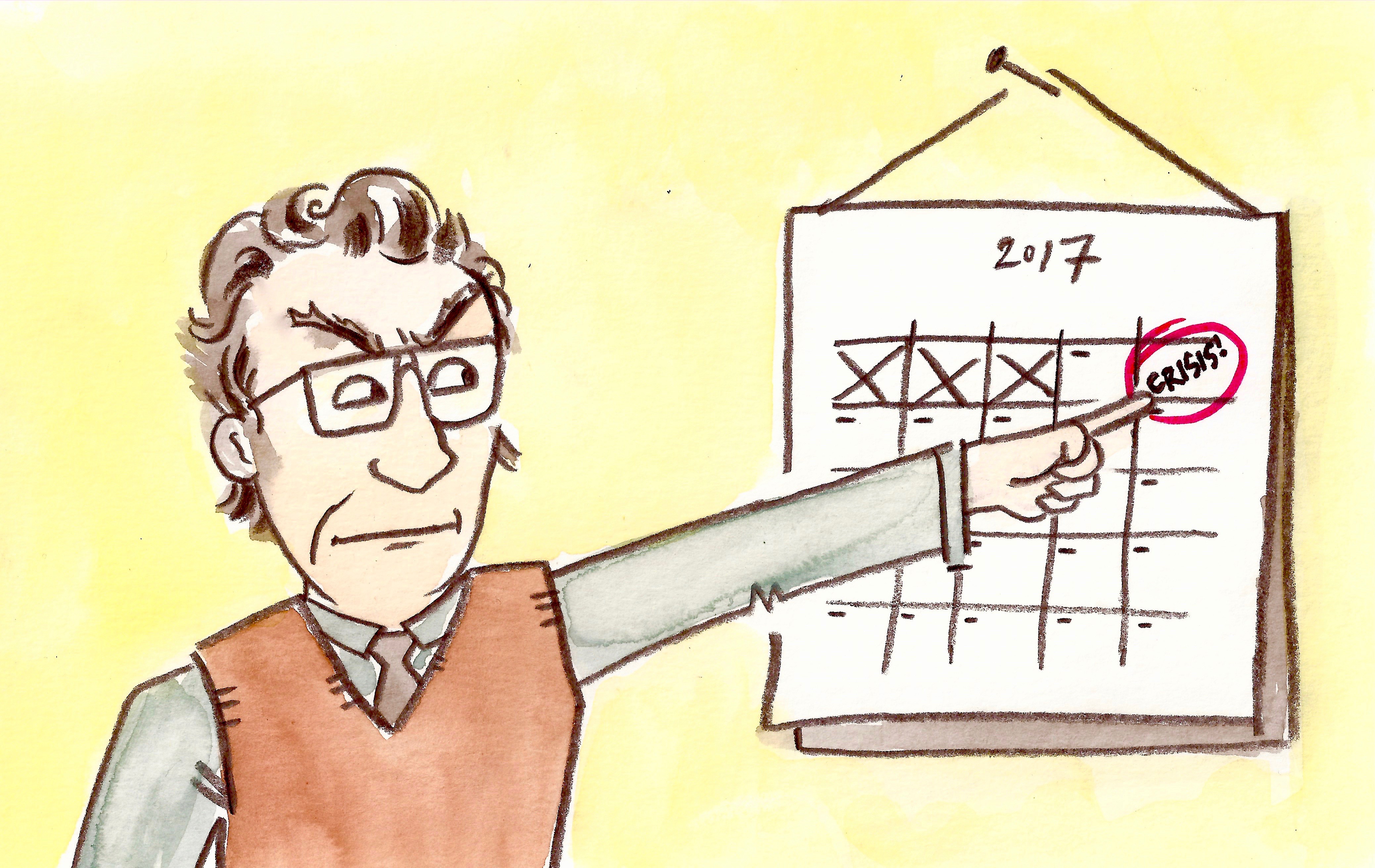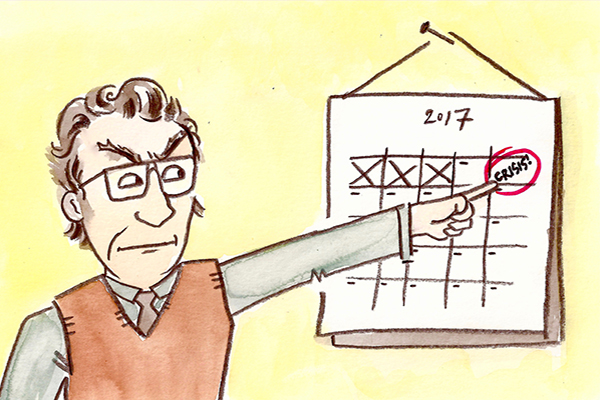Earlier this month I had a conversation with a regional manager from a major insurance company. She explained to me the many aspects of her industry: the commission based salaries, strategies to sell life insurance to one year-old children, and how to retain employees. To be honest, I don’t find insurance to be the most riveting topic out there, but I did have a question I wanted answered: What does her company do with the money their clients pay for their insurance packages? Her response surprised me for its candor, she said:
- “You know, insurance companies don’t make their money from premiums and things like that anymore. Most profits come from investing in the stock market.”
We truly are in the era, as Minsky called it, of money manager capitalism. What this means is that insurance companies are no longer in the business of insurance, they are just another player in the financial markets; the only thing that differs is how they get their capital. Combine that with the fact that many of their employees have their entire pay check dependent on commissions and we have companies that are trying to sell as many policies as possible – sometimes to people who do not need it or can’t afford it – in order to have more capital for financial investments.
If that sounds familiar it is because those are the kind of practices (while obviously not the only one) that led to the Great Recession and specifically to the crash of insurance giant AIG (which was bailed out with 182 billion dollars). It is, to say the least, disheartening to see that those practices are still in place by insurers and elsewhere, but it is hardly surprising. To know why we must turn to Minsky’s Financial Instability Hypothesis.

The Hypothesis is possibly the most notable part of Minsky’s extensive work, it is indeed brilliant in its accuracy and simplicity. Nevertheless, it seems to escape from the spotlight of economics and politics in an counter-cyclical manner: every time the economy does well, people seem to forget about it – but during the crisis his book Stabilizing an Unstable Economy went from costing less than 20 dollars, to over 800 (that is, if you could find it). Another example, The Economist had only mentioned him once while Minsky was alive, but since the 2007 crisis his ideas have appeared in over 30 of their articles. As the British newspaper puts it, “it remained until 2007, when the subprime-mortgage crisis erupted in America. Suddenly, it seemed that everyone was turning to his writings as they tried to make sense of the mayhem.” Therein lies the irony, it is exactly when the economy is booming that we should pay the most attention to the Financial Instability Hypothesis.
In short, Minsky postulated that stability is destabilizing, as Oscar Valdes-Viera has awesomely explained before in this blog. In his post, Oscar tells us to be skeptical of politicians who say the economy is doing well; that is when individuals and institutions are moving from hedge, to speculative, to Ponzi positions. In most cases, economic actors will become eerie of risk after a crisis and shun from risky investments such as CDOs. It seems, however, that this aversion to risk has not happened. One can speculate many reasons for this behavior, among which is the bailing-out of so called “Too-Big-to-Fail ” organizations.
As such, it is clear that although Minsky’s popularity increased during the last crisis, the people making important financial decision did not learn from his work. The problem of irresponsible behavior and borderline fraudulent financial innovations still remain. It is time to enact on a less popular, although still important, part of Minsky’s work: the “Big Bank”. That bank, naturally, is the Fed and it plays a number of roles: it sets interest rates, it regulates and supervises banks, and it acts as lender of last resort. However, as Randall Wray explains in a 2011 paper, “most Fed policy over the postwar period involved reducing regulation and supervision, promoting the natural transition to financial fragility.”
Case and point, the SEC and the IRS had their budget severely cut in 2014 and do not currently have the capacity effectively regulate the financial industry. To make matters worse, shadow banks and traditional banks – as demonstrated anecdotally by my conversation with the insurance agency manager – still intermingle in financial innovations. Common sense dictates that after the 2008 crisis companies should have reset to the more sustainable and safer hedge position, but it seems that many financial actors went right back to the more unsustainable speculative position after the crash. One could also have expected that financial jobs would decline in popularity post-2008, but the opposite has occurred; finance as an industry now takes 25% of corporate profits, but only makes up 4% of jobs in the US. The rising importance of the finance industry has other adverse effects besides increasing the possibility of crisis, it means that companies are not investing in producing real output for they can earn more by playing the markets.
Hence is the place in which we found the economy: misguided policy has created a weak regulatory environment where irresponsible risk-taking is ‘insured’ by the precedent set by bail outs, and where even the highest ever levels of liquidity do not lead to real investment and a strong economy. This bad omens have inspired many economists to declare that a crisis is coming. Add to that the fact that recently Minsky has been featured in mainstream media sources like The Economist, and that his seminal book in financial instability was recently the number one best seller on Amazon for Public Finance, and one has reason to feel a bit uneasy about the coming year.

Carlos,
Of course it is good to be careful of invest
Perhaps it is better that Insurance companies do invest the funds they receive upfront to be able to pay out later. That very well could be putting the wealth to productive use. Helps the economy and a good economy is good for their customers.
Insurers might be more prudent than many others with the investments as they will need the money back and have some experts on risk. Investing is risky after all.
A classic example of this is talked about by Warren Buffet. He learned about this from his great teacher Benjamin Grahm, who explained to him why he liked investing in insurance businesses. Buffet likes owning insurance companies because his return on investment is over 20 percent per year and it provide float (money) to invest with out having to pay for it with interest. Now that is smart isn’t it? Because, float is a form leverage, the return on equity is larger than the return on investment when profitable.
Any howm it can be googled or one could search Buffets letters and books for explanations.
google: “Insurance company investments float site:www.berkshirehathaway.com”
2014 Birghire’s annual report: (not an explanation but results)
“Berkshire’s huge and growing insurance operation again operated at an underwriting profit in 2014 – that makes 12 years in a row – and increased its float. During that 12-year stretch, our float – money that doesn’t belong to us but that we can invest for Berkshire’s benefit – has grown from $41 billion to $84 billion. Though neither that gain nor the size of our float is reflected in Berkshire’s earnings, float generates significant investment income because of the assets it allows us to hold.
Meanwhile, our underwriting profit totaled $24 billion during the twelve-year period, including $2.7 billion earned in 2014. And all of this began with our 1967 purchase of National Indemnity for $8.6 million.”
Thanks for the thoughtful and informative comments, I will make sure to look further into this.
See section on float:
http://www.insurancejournal.com/news/national/2005/03/08/52382.htm
found by googling:
Insurance company investments float buffett
A note on leverage: It was a problem in the 1929 crash. There were funds of companies and funds of funds. This made multiple layers of leverage. The net leverage was like a multiplication of the leverage in each entity layer.
Buffett’s Berkshire Hathaway Buoyed by Insurance ‘Float’
http://www.wsj.com/articles/SB10001424052748704520504576162782244276342
I would suggest you read this article. It is about how we could use the income tax code to help prevent the next crisis. http://wp.me/p42WQA-7c